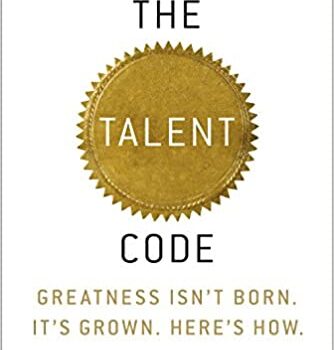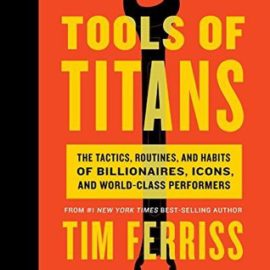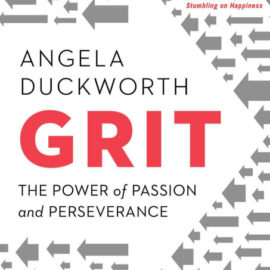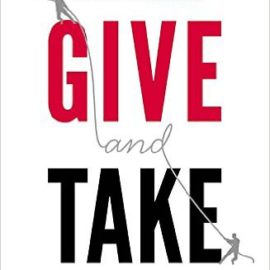

Want to get the main points of The Talent Code in 20 minutes or less? Read the world’s #1 book summary of The Talent Code by Daniel Coyle here.
Improving is much more about the right approach, environment, and mentality than innate talent. Unfortunately, many people bring the wrong ideas from elsewhere in society into learning a skill, inhibiting their ability to improve. When examining top performers in a variety of disciplines, certain patterns emerge between them. These patterns include how practicing should emphasize mistakes and difficulty, why a long-term outlook is more important than practicing harder, and how coaches and students optimally work together by reading each other’s signals.
Myelin
Understanding the right ways to practice first requires understanding how the brain works. The brain as a tape recorder or machine is an inaccurate metaphor. Rather, the brain is a living construct that continuously evolves. This construct grows by deepening and widening specific connections between the brain’s neurological circuitry.
What has been traditionally labeled ‘muscle memory’ is really our brain’s neurological circuitry. These brain circuits are tied together and insulated by a substance called myelin, and control our brain’s unconscious ability to coordinate the actions of the body. The more deeply those circuits are coated in myelin, the faster and more accurately they fire in harmony. The performance of a top athlete or pilot comes from the tightly-coordinated wiring of their brain’s unconscious circuitry. The more a skill is used, the less we become aware we use it: it just feels natural. Every time we practice or engage in any skill, we unconsciously are strengthening the neural circuitry of our actions, for good or bad. Once we cement these mental links in place, they become unconscious habits, and are very hard to break. We can only do so by creating alternative myelin pathways by consistently taking part in different conscious actions.
Myelin is living tissue, and it responds to actions and repetition. It is built much more easily by the young than the old, though people will still gain myelin links overall until around 50. World class performers usually have a much easier time if starting young. On the other hand, it takes time and years to insulate myelin circuits from potentially bad impulses. This explains why teenagers make more mistakes or impulsive decisions. The elderly are seen as wise and prudent because their circuits are complex, well-developed, and fully insulated. For all parties, especially the elderly, the pattern for retaining one’s skills are consistent: ‘use it or lose it.’
Practicing at the Edge of Competence
There is a certain optimal zone for skill-building called deep practice. World class performers obtain their edge from practicing deeply, and deep practice requires screwing up. Myelin responds to intense repetition and focus, and it does not discriminate between good or bad actions or habits. That focus comes from struggle, and the repetition comes from practicing the right things. The need to struggle means we need to avoid effortless practice. Being in the flow state may be great for real-time performance, but it is very ineffective for practice. When we inevitably struggle at the edge of our competence, we are forced to engage the brain at a new level of depth. For example, if you are practicing climbing a mountain, you’d rather climb up the slippery hills instead of the well-trodden smooth crests.
Thus the goal of practice is changed to consistently rewiring the brain. We want to find the limits of our capabilities. Seek out problematic areas, struggle, and solve them one by one. Mistakes should not be ignored or glossed over, but immediately returned to and strategically addressed.
Embracing this new approach requires a change in mentality from mistake-avoidance to mistake-seeking. Unlike what we have been taught in school, mistakes are an opportunity to learn at a deeper level. Consistent mistakes signify a lack of competence in that area; or inverted, an opportunity to improve. The faster one seeks out those mistakes, the more opportunities they have for deep practice.
Many students engaged in deep practice demonstrate similar body language. Half the time they look effortless, natural performers. The other have, they consistently jump from one point of struggle to the next. They frequently squint with an intense look of concentration, their faces puzzled about why their approach wasn’t working. They sought out errors and struggled through them (Lance Armstrong was described as having a “maniacal focus on errors”).
Put as a simple flowchart, the practice sessions of top performers often look like this cycle:
Choose a target or skill out of reach -> attempt to reach it -> evaluate from feedback the gap between the reach and the target -> repeat and refine the process.
As a result, when a talented master learns a skill, they do not feel like they are learning it. Rather, they struggle until they actually can do it. Instead their awareness and effort is spent on the above cycle of stumbling through the activity. Below is a list of the most common words by top-performing students about how they view their practice:
1. Attention
2. Connect
3. Build
4. Whole
5. Alert
6. Focus
7. Mistake
Like this summary? Want to learn more from books than ever? You'll love my product Shortform.
Shortform has the world’s best guides to 1000+ nonfiction books and articles. Even better, it helps you remember what you read, so you can make your life better. What's special about Shortform:
- The world's highest quality book guides - we discuss the book's main ideas, with expert analysis and commentary expanding will beyond the book
- Interactive exercises that teach you to apply what you've learned
- Discussion communities - get the best advice from other readers
Sound like what you've been looking for? Sign up for a 5-day free trial here.
8. Repeat
9. Tiring
10. Edge
11. Awake
Words such as natural, effortless, or automatic do not come up.
Examples:
- Try to memorize two different word association lists. The first is a normal list with associations like ocean / breeze. The second is the same type, but with one letter omitted. Ex: bread / b_tter. If one quizzes their memory on both charts, they will find that they score 300% better on the second list. This occurs because the first list effortlessly allows the brain to intake data at a superficial level. There is no real mental link here, little actual exercise. The second list requires the brain to stop, stumble, and think of what actually fits the second word association. This extra investment gives a disproportionate return when remembering it later.
- Arguably the most fundamental human example of skill building is a baby teaching itself how to walk. It does not do so effortlessly, nor does it sit in a classroom learn by a teacher’s instructions. Instead the baby tries to walk, struggles, falls over, and repeats the process. They instinctively endure this frustrating state, and thus learn how to walk. Research has shown that a key factor in developing the ability to walk is simply the time spent trying to walk.
- These patterns of success also can apply at a higher level of organization. For instance, Toyota has created a dominant foothold in the car industry in part due to its emphasis on continual, minute improvement every day. Toyota managers emphasize looking for problems rather than enjoying successes.
Practicing 80/20 Style
If mistakes and one’s edge of competence are actually opportunities for the deepest learning, how can we change our practice to maximize this? First, we want to practice in an environment where we can push our limits without serious risk. Second, we should compress the key aspects of the overall skill into a miniature version of the actual skill. That way, more of our time is spent on the high value areas that lead to the deepest practice.
Examples
- In the early days of flight, military pilots frequently died on simple transport flights. Flying a plane was dangerous and expensive, and one could not make certain mistakes in a practice flight without risking death. The answer was to change the medium of practice from a live-flight to a safe simulator.
- The Army Air Corps made a major breakthrough in the 1930’s when it tried the grounded, mechanical trainer designed by Edwin Link. The world had previously dismissed Link’s trainer, called the Blue Box. as a barebones toy, a contraption filled with levers and gauges. However, it had two unique advantages. First, it allowed pilots to practice difficult maneuvers in a safe, grounded environment. Second, it reduced the complexity of flying to specific, targeted areas that tested a pilot’s competence. In an actual plane a pilot could only practice mistake-prone tasks like taking off and landing after long periods of flying and readying up. Training in the Blue Box, they could practice these movements over and over, seeking out the difficult parts of flying they might make a mistake in, and solving them.
- Compressed practice also helps explain why Brazil has become such a dominant nation in Football/Soccer after the invention of Futsal. Futsal is a variant of soccer played in a much smaller field, with fewer players, on terrain like concrete. The smaller space led to players getting many more touches of the ball, and chances to practice difficult moves. The fewer players per game let each player get more touches and chances to play defense.
Furthermore, the cramped conditions forced skill development. Unlike on the wider, standard soccer field, a futsal player can’t just rely on their athleticism by kicking the ball into open space and sprinting past the defender. Futsal players have little choice but to practice certain fundamental skills more deeply than if they had played on a normal pitch.
Calibration
Why do clusters of Genius show up at key regions and periods in history, such as the renaissance in late Medieval Northern Italy? In the present day, certain regions or talent centers create a disproportionate output of the elite performers in their activity.
Research by individuals such as K. Anders Ericsson has shown that talent is often a function of the quantity of correct and deep practice. However because of the level of focus required, this is generally limited to at most 3 to 5 hours per day. Hence consistent, focused practice is what really moves the needle, rather than 12 hours one day and 0 the next. People who live and breathe their craft under the supervision of a master naturally have an external pressure to practice consistently.
Deep practice is a critical catalyst for building insulated neurological connections, but practice also must be calibrated towards what works. The best way to do this is to practice and live in an environment that aggressively pushes towards the right calibration.
Chunking is an automatic brain process that allows for energy saving, better recall, and instant calculation or evaluation. Top performers’ training teaches their brains to work differently. The renowned psychologist Adrian de Groot discovered that most chess masters do not have photographic memories overall: they just have them for chess. Their brains have amassed so many patterns of high-level play that they can effortlessly memorize and evaluate positions. The difference between a grand master and a master player is not primarily in their tactics or ability to read into the future, but their ability to evaluate the position on the board. However, if they are given positions that cannot possibly occur in a real chess game, they have no more insight or memory than a layman.
A key goal of instruction is to develop the student’s ability to intuitively sense whether their practice is calibrated or not. A musician needs to qualitatively sense whether they are in or out of tune. To do this, their brain needs to be able to unconsciously chunk a number of discrete inputs together. Top performers talk a great deal about feeling and express their evaluation of performance in sensory language – in effect they develop their own internally-calibrated language.
Examples
In Renaissance Northern Italy, a major part of developing talent was their craft guild system. Guilds operated by an apprenticeship system. Young apprentices learned their crafts from the bottom up under the tutelage of top performers in their field. Apprentices had the opportunity to work directly on their crafts from a young age, stumbling around and solving problems first-hand. The mentors supplied the feedback necessary to calibrate the apprentice’s evaluation of their abilities and what the right approaches were. The overall approach combined the quality of deep practice, the quantity of deliberate practice, and the calibration by a master. Hence it is hardly a surprise that this period and region is known for a legion of brilliant artists and craftsmen such as Michelangelo and Da Vinci.
Meadowmount School of Music has trained many famous musicians like Yo-Yo Ma. They emphasize chunking by breaking down notes and rhythms into discrete parts, then combining them together. In effect, this is physically doing what myelin circuits do mentally: create connections between different parts of the brain. Students are initially surprised by how slow they progress, but the slowness actually is by design. Going slowly allows for a minute focus on errors and precision. It also allows for an intuitive sense of calibration, allowing the musician to sense what sounds or feels right and wrong.
Visualization
Correctly executing complex skills is something that can be trained not only through action, but also through the mind. One of the top youth tennis players in the country, Carolyn Xie, learned how to hit a backhand exactly like Roger Federer without any training for it. She didn’t know why she could hit a unique backhand, she just could. She actually developed this skill by watching almost every one of Roger Federer’s matches, unconsciously imitating it without trying to.
Ignition
The tactical approach one takes towards skill building is only one half of the component. The attitude a student brings towards their first lesson or experience in a craft can matter far more than the quality of said lesson. One’s psychological identity, long-term focus, and emotional attachment are the three key intangibles that can make all the difference in rate of progression.
When building any skill, one’s future ability is uncertain. All of these factors are what fuel motivation and love of a craft. Those who possess that love will be able to sustain the long, frustrating hours of deep practice because they believe the end will be worth it. Because humans naturally conform to their internal identity, if one already possesses the identity “I am a musician’ from the start, they are more likely to take the required actions needed to make that happen. Otherwise they might hit a wall at some point and lose interest.
Like this summary? Want to learn more from books than ever? You'll love my product Shortform.
Shortform has the world’s best guides to 1000+ nonfiction books and articles. Even better, it helps you remember what you read, so you can make your life better. What's special about Shortform:
- The world's highest quality book guides - we discuss the book's main ideas, with expert analysis and commentary expanding will beyond the book
- Interactive exercises that teach you to apply what you've learned
- Discussion communities - get the best advice from other readers
Sound like what you've been looking for? Sign up for a 5-day free trial here.
In a study of musicians, the students who came to their first lesson with a long-term commitment to play outperformed those with a short-term commitment by 400% with an equal amount of practice. A long-term commitment mentally implies that perceived barriers are simply a short-term obstacle to be overcome, rather than a true stumbling block.
Surprisingly, many talent hotbeds exist in unattractive locations with junky buildings that resemble a shantytown. The rough, unappealing environment actually serves as a catalyst for effort and motivation. If they are given luxurious accommodations, they instinctively will have less to aim for. They will already be experiencing the luxury without effort, rather than at the end of a grueling journey.
Psychologists believe that the brain has a reservoir of energy, ‘The Scrooge Reservoir’ it keeps locked up unless approached by the right kind of unconscious and emotional cues. It can be tricked, but not explicitly.
Just as with the Renaissance example given previously, the right environments convey the necessary subtle cues that drive passionate and focused behavior against great obstacles. This can take many forms, both positive and negative and different types of each. The question is whether the cues around the student lead them to adopting the necessary mentality, emotions, and outlook. If the environment can do so, then the matter becomes not if they can succeed, but when.
Some of these cues include feeling part of a group on the rise, that you are in a different an uncomfortable environment, and that there is a sweet, desired goal at the end of the journey. Complacency is an attitude that would feel completely out of sync with everything else in the environment. These cues can take different forms, for example, the idea of going to college for inner-city kids, or the ability to become Ronaldo for a Brazilian Futsal player. Other important intangible elements include whether the environment fosters or acts against developing self-discipline.
Examples
- A study using Yale freshmen planted a subtle cue to see if they could modify behavior. They put the students in a room before giving them an impossible math problem, and gave them all a magazine to read. The front-page article in each was an innocuous profile of a Yale math student who originally didn’t know his major, but found he loved math and made a happy career out of it. The students who received an article where the math student’s profile recorded his birthdate as the same date as their own had significantly more positive attitudes about math, and spent 65% more time attempting to solve the impossible problem.
- The Scrooge Reservoir can be accessed by negative cues as well. All people who had their own entries in the encyclopedia Britannica were assessed by when their parents died. It turns out that many of these highly successful people were orphans or had a single parent die early. These deaths occurred at an average age of 13.9 years versus 19.6 for a control group. They suffered dearly from these early losses, and their brains were trained to realize early on that they were not safe or protected in the world.
- A famous study done by Carol Dweck found that students who took a difficult test grew very differently depending on how they were affirmed. Those who were praised for their effort improved by 30%, while those who were praised by their intelligence dropped by 20% on subsequent tests.
- The KIPP school program took many of the best ideas and practices done by teachers or schools in isolation and combined them together in a program for inner-city students. The result is a carefully designed environment to foster hunger and drive among its students. They use a variety of techniques to achieve this, such as deliberately laying trash around the school, then praising who picks it up. They make all privileges earned, even for such things normal people take for granted as not having to walk in a line. One notable technique is to hold the group accountable for individual misbehavior. If a student does a flagrant activity like insulting another student or rolling their eyes at a teacher, the class immediately is stopped and the offending error and student pointed out.
Elements of Great Teachers
In addition to developing the right mentality within students, top performing institutions have a consistent focus on minute details. Everything from the environment, to body language, to information presentation and pace is considered. Often this can come from a specific teacher or mentor, who can personally serve as a calibrator.
These teachers or mentors, such as famous UCLA Basketball coach John Wooden, have the advantage over a system like the Blue Box flight trainer because of how they can explain and link concepts together. For example, Wooden would explain an entire move, then break it into discrete parts and work through each part individually. Then the players would practice each part until it became accurate and automatic. Because the teacher can frame and link discrete activities in many different ways, students are able to intuitively understand how it all fits together. This is how the mentor can communicate the depth required to become a master in a field.
The best teachers also have the ability to understand each student as an individual, and customize their training to fit each student’s requirements. This applies both physically and psychologically: a spoiled rich or talented kid who has earned nothing but praise his whole life might need to be cut down and learn to focus on his effort. Or a kid who grew up without confidence or references might need some praise to see their own value and reaffirm a positive identity. Students don’t just listen to verbal instructions; they also watch and absorb information using their mentor or coach as a model. Thus the teacher must holistically embody what they are teaching, not verbally say one thing but demonstrate another through their actions.
The type of language and delivery of instructions also matters. Top coaches like John Wooden talk like a GPS navigator, giving short, terse instructions as their main form of calibration. They talk precisely, with few words. While doing so, they constantly observe what is working and what isn’t, and then recalibrate their own approach. Therefore the mentor – student relationship acts as a complex feedback loop, where both sides are constantly readjusting their approach from data they observe in the other party.
In many cases, it may be tough for the instructor to get through to the student on a particular issue. What matters is the result, not the form. Accordingly, many top instructors have developed the ability to personality-switch and act theatrically to get the reaction they need from their apprentices. Furthermore, the student must be able to trust their teachers, both for competence and integrity. They must be made to feel like all parties are on the same team.
Example
Some people like Coach Tom Martinez have developed the ability to deeply connect with others. They do so by intuitively identifying and using approaches that are both unexpected by the other party, but also appreciated. That allows them to differentiate themselves and forge a real connection in little time.
Martinez had to meet with and assess a prospective football draft pick candidate in JaMarcus Russell. When Russell treated him with understandable suspicion and formal distance, Martinez told him that he wanted one thing from Russell: to get a signed jersey and photo for his grandkid. Such a simple, but targeted action allowed him to forge a genuine connection with Russell in less than a minute.
Notes:
[This book was part of the 21st century social pushback against demarcating people by talent. This blossomed after Malcolm Gladwell’s ‘Outliers’ book proved that it was a message people wanted to hear. Coyle’s contribution is to add in some layman-simplified science to this framing.In recent years there has been academic pushback against K Anders Ericsson’s studies that prompted this whole movement. Outlier cases are given as rebuttals, such as 4x World Chess Champion Magnus Carlsen, who started later than his peers and practiced much less. However, The Talent Code does not show that innate talent isn’t a critical factor: both talent and the right methods of practice and coaching can play key roles. The benefit of the book to the average reader is to illuminate the proven methods they can use.
Charlie Munger emphasizes the approach explained by Coyle in teaching. Normally one might teach an abstract concept by sharing a story, then explaining why the story played out the way it did. Then the teacher would relate the story to the current problem facing their student or advisee. Instead, Munger suggests telling the story without elaboration. This forces the listener to mentally “reach” for how it relates to their situation. In Coyle’s framework, they have to do the deep work required to make the connection and discover the insight, which then increases the strength of their neurological myelin twining.]






